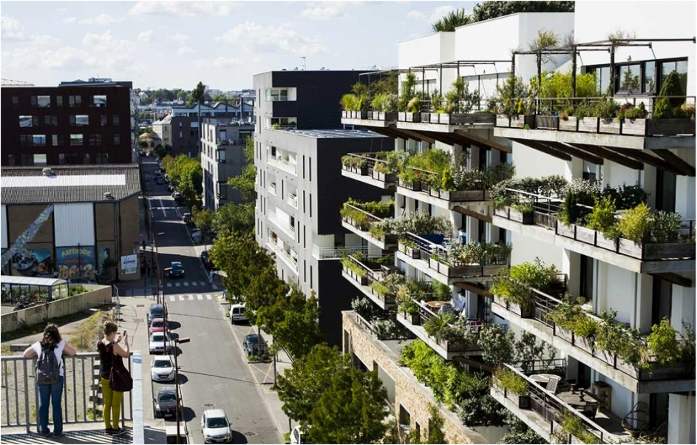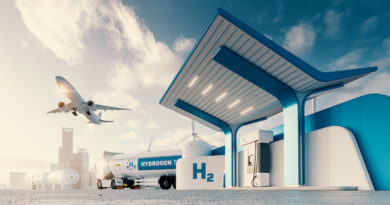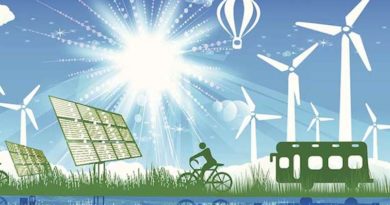
Energy Efficiency First: a golden rule for a Paris agreement-compliant Energy Union
Introduction
Buildings and industrial facilities use a considerable amount of energy for the purpose of heating, cooling, lighting and hot water use. They are nowadays responsible for about 40% of final energy consumption in the EU.
It is hence all the more important to make sure this energy is produced and consumed in the most cost-effective manner. Indeed, saved energy is the cleanest one available to European customers.
The International Energy Agency (IEA) has long recognised energy efficiency as the “first fuel” of the global energy system, for which an enormous and untapped potential exists.
The Clean Energy Package proposed in November 2016 by the Commission as well as the current discussions on the future of multiannual budget constitute an exceptional window of opportunity for the EU to put energy efficiency on the top of its climate and energy agenda and to take on the energy efficiency leadership.
Energy Efficiency needs to be increased across the entire energy chain
For years now, Veolia has been providing resource (water, materials and energy) optimization solutions for municipalities and industries across Europe.
Hence, the group carries energy efficiency at the heart of its activities, as a part of its circular economy paradigm. In collaboration with our customers and partners, we develop services that aim at reconciling energy and environmental performance.
We do it notably through energy performance contracts by which we commit to our clients when it comes to the optimization of the production efficiency, reduction of energy consumption, and improvement of their energy mix.
Our solutions apply to buildings both when it comes to the energy supply since we operate boiler and cogeneration installations, as well as to the demand side, given we provide tailor-made solutions for enhancing the way buildings operate.
Part of the agreed remuneration is results- based. Regarding district heating networks, their operations are covered by contractual arrangements so as to incentivize the operator to improve both their generation and distribution efficiency.
Because of this dual focus, we can not but see energy efficiency as something to be strived for and achieved across the entire energy chain from generation through transmission and distribution to consumption.
While so far, the regulatory framework (in particular the 2012 Energy Efficiency Directive) has focused almost exclusively on the final energy consumption, the significant potential of efficiency in the energy generation and supply has been generally overlooked.
Searching for the reduction of final energy consumption, although essential, can only take us that far. This is all the more alarming that the potential for increased energy efficiency on the supply side is tremendous: for instance, the EU project Heat Roadmap Europe estimates that there is more heat wasted during electricity generation than is required to heat all buildings on our continent.
Getting energy efficiency piece in the Clean Energy Package right
The EU Clean Energy Package currently under interinstitutional negotiations offers a significant window of opportunity to make Energy Efficiency a centerpiece of a successful transition towards decarbonized future in Europe.
The results of the on-going trilogues will also underpin the bloc’s position at the December’s COP24 climate conference in Katowice.
Ambitious targets
In order to achieve its decarbonisation objectives by mid-century, the EU needs ambitious energy efficiency target for 2030.
The Parliament understood this imperative and proposed in its compromise report to raise the overall EU target from 30% proposed by the Commission to at least 35 % and to make it binding at the European level.
However, as we know today, in particular in the light of its commitments to the Paris agreement, the EU will have to review both its 2030 (40%) and 2050 GHG reduction targets.
We also know that in the EU, 3/4 of the emission reductions needed to meet this Agreement must be reached through energy efficiency improvements.
Hence, together with a group of 75 leading businesses and associations, Veolia signed a call for a cost-effective energy efficiency target of 40% by 2030 with an extension of 1.5% cumulative annual energy savings obligations beyond 2020 (with a 2050 perspective) to be inscribed in the final text of the Energy Efficiency Directive.
These objectives would radically strengthen investor confidence and channel private investments towards large-scale renovation and conservation projects.
Member States now need to get on board and take the responsibility for the future of energy efficiency in the EU.
Primary energy approach should prevail
In line with its objectives, the EED should promote all energy savings both in the energy generation and energy use.
But according to the latest Eurostat data we are far from the objective when it comes to primary energy savings: the European Union falls short of meeting the EU Energy Efficiency target with a 4% gap for primary energy consumption.
In this perspective, attempting to reduce primary energy consumption by increasing the efficiency of production, transmission and distribution processes should be from now on prioritized in the revised EED.
This could be achieved through technologies such as district heating networks and cogeneration facilities.
As a corollary of an increased focus on primary energy consumption, existing inefficiencies that are being found across the entire energy chain should be correctly assessed and communicated to final consumers so that they could make informed choices.
Hence the importance of having the right value of the EU Primary Energy Factor for Electricity (PEF). It indicates how much primary energy is used to generate a unit of electricity.
When Member States choose to express their energy savings in primary energy, the PEF is applied to convert final energy savings into primary energy.
A too low of value, as the one proposed by the Commission (PEF of 2.0) actually underestimates the transmission losses that occur on the electricity grids.
Because such a value creates a distorted picture regarding the real efficiency of electricity based-solutions as compared to their alternatives (such as district heating and cogeneration), we argue in favour of maintaining the current 2.5 PEF value for grid electricity.
The compromise proposed by the EU Parliament of 2.3, and limited only to the EED would be suitable.
Energy efficiency first’ is more than a slogan
Although energy efficiency is a key objective of the Clean Energy Package, the need to optimize energy consumption across the entire energy system before investing in more generation capacities is not reflected in the current policy debate.
Even more, in recent weeks, it became evident that rather than being a guiding principle for all EU and national energy and climate policies, Energy efficiency first has been seen by some as a mere “slogan”.
In fact, Member States should make sure this principle is applied across the entire Clean Energy Package, not only to the EED.
Enshrining this principle also in both the Energy Union Governance Regulation and the Renewables Directive will enable countries to maximise their energy efficiency potential while pursuing their renewable energy development strategies.
The embodiment of the Energy efficiency first principle will also help acknowledge significant efficiency gains that stem from growing integration of renewable energy sources such as wind, solar and hydro.
It will also help Member States to move faster to decarbonised, secure and cost-effective energy systems that reap all the benefits of an integrated approach to energy planning and an effective sector coupling.
Governance of the EU as a lynchpin of successful efficiency policies
The quality of the coordination to be achieved under the umbrella Regulation on the Governance of the Energy Union will be essential to secure the transposition of the future Energy Efficiency Directive and its objectives into national measures.
This regulation needs to include a methodology to equitably share the overall ambition if national targets do not add up.
The Commission should monitor progress made by each Member State against a trajectory based on mandatory and common check- points. In case of a delivery gap, national measures must come first.
The design, monitoring and review of the National Energy and Climate Plans (NECP) are paramount to align Member States’ progress with the EU overarching and binding targets.
In addition, to enable the realisation of NECPs, the next Multiannual Financial Framework should tackle the estimated €179 annual decarbonization investment gap.
Enshrining the Energy efficiency first principle in the future EU Budget
When it comes to energy efficiency, securing a favorable financial framework is essential, as energy efficiency projects typically require sizable upfront investments that industries, cities and individual consumers are not always in capacity to deliver.
Therefore, the future Multiannual Financial Framework should fully integrate the Energy efficiency first principle, to ensure viable business models and to avoid diverting funding streams into potential stranded assets (such as not “Paris-compliant” energy supply infrastructures).
In parallel, the overall budget should be earmarked for climate action, prioritizing energy efficiency projects (such as deep staged renovation projects) and incentivizing public-private partnerships.
Conclusion
At a time when the European Union is struggling to reach its own climate and energy objectives7, has to adjust its short term and long term policy to be compatible with the Paris agreement, and strengthen its energy security, the need for putting our efforts into increased energy efficiency is more urgent than ever.
Only by adopting both a constructive legislative framework for 2030 horizon and a responsible 2021-2027 budget that are guided by the Energy Efficiency First principle, the EU will be on the right track to meet its climate commitments, enhance indoor and outdoor air quality, and reach energy independence.
Committed to its core missions, Veolia stands ready to help industries, cities and people achieve an optimized decarbonisation of the European economy through increased energy savings.




